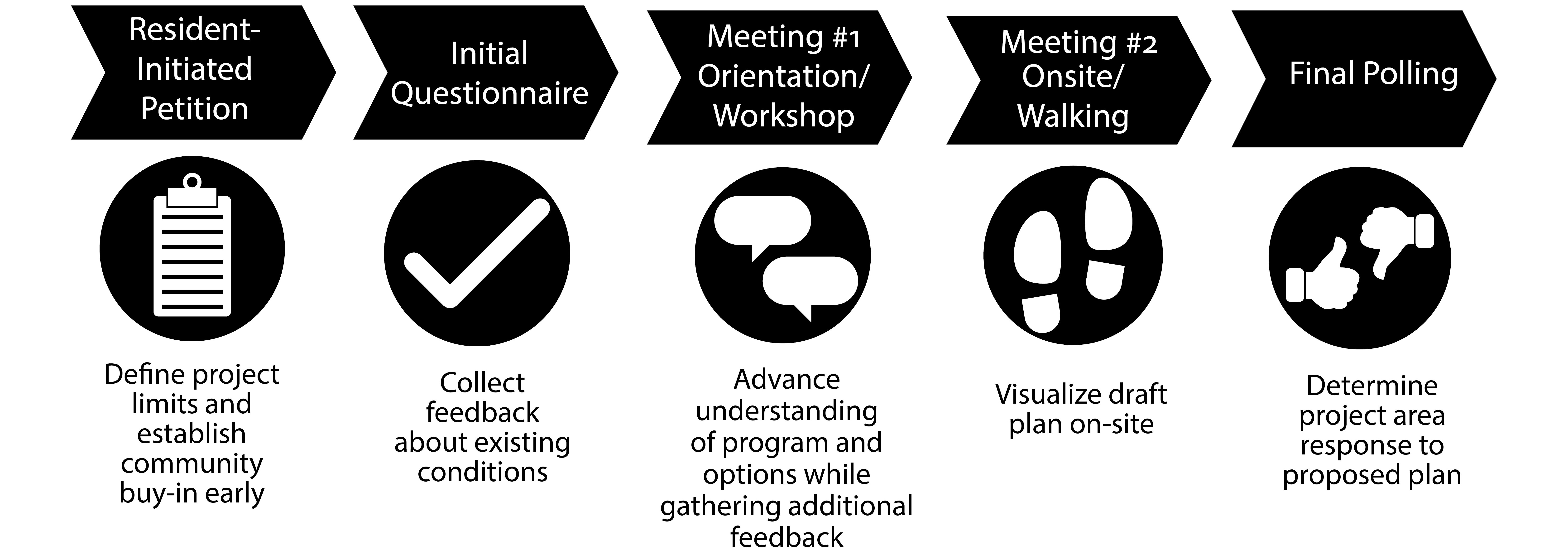Traffic Calming Petition and Request Forms (Updated May 2025)
Property Manager Petition Form
Petition Evaluation Categories
Updated Program (09/05/2023) Legislative Information
Updated Program (11/19/2018) Legislative Information
This website uses cookies to enhance usability and provide you with a more personal experience. By using this website, you agree to our use of cookies as explained in our Privacy Policy.

If you are looking for a way to make cars drive slower on your neighborhood street, the City of Ann Arbor Traffic Calming Program may be a good fit. Traffic Calming slows traffic through physical changes (such as speed humps and curb bump-outs) that impact the behavior of people driving cars and improve conditions for people living, walking, and bicycling in local neighborhoods.
This program is a formal process for residents and property owners to engage the city in a partnership to explore traffic concerns, and potential solutions, on local streets.
For more information, please review the Traffic Calming Guidebook or check out the Program FAQ.
To see examples of traffic calming around Ann Arbor and locate specific project materials, visit the Projects page.
Resolution R-23-330 directs staff to update the Traffic Calming Program. Our dedicated team is diligently working on these updates, which will impact the current petition process as outlined in the guidebook. However, the city wants to emphasize that residents should not be discouraged from submitting a petition. Applications will be placed in queue, and upon update, petitioners will be notified of additional information required for a qualifying petition.
Please review the Traffic Calming Guidebook or contact TrafficCalming@a2gov.org or 734.794.6429 for more information on the petition process and program qualifications. It is recommended that you leave a voicemail when calling 734.794.6429 so that staff know they missed you and can return your call.

Process is as follows:
1) Resident initiated Petition: Define project limits and establish community buy-in early.
2) Initial Questionnaire: Collect feedback about existing conditions.
3) Meeting #1 orientation/workshop: Advance understanding of program and options while gathering additional feedback.
4) Meeting #2: Visualize draft plan on-site.
5) Final polling: determine project area response to proposed plan.
Petitions are considered on a first-come first-served basis. The Traffic Calming Process may take more than one year from petition submittal to construction, visit the Projects page.